Table of Contents
Quality Service Guarantee Or Painting Free

1 BHK - ₹4,500

2 BHK - ₹6,000
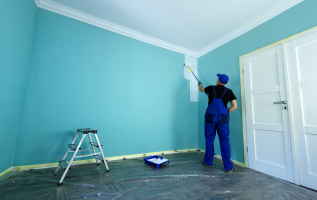
3 BHK - ₹9,000
Loved what you read? Share it with others!


Submit the Form to Unlock the Best Deals Today
Check Your Eligibility Instantly

Experience The NoBrokerHood Difference!
Set up a demo for the entire community

Tenant Super Relax Plan
Enjoy Hassle-Free Renting
 Full RM + FRM support
Full RM + FRM support Instant alerts & premium filters
Instant alerts & premium filters Rent negotiation & relocation help
Rent negotiation & relocation help
How to Colour the House | The Ultimate House Colour Tutorial
Table of Contents
Are you ready to take your home from ordinary to extraordinary? Look no further than our ultimate house colour tutorial! It's time to unleash your creativity and bring new life to every corner of your living space.

Whether you're a seasoned decorator or a novice looking to embark on your first colour adventure, this guide will provide you with the inspiration and knowledge you need to make your house truly shine. From selecting the perfect hues to mastering the art of coordination, we'll walk you through the steps to create a space that reflects your unique style and captures the essence of your vision.
Get ready to transform your space into a personal haven that will leave everyone in awe. Let's dive into the world of colours and unlock the true potential of your home!
Quality Service Guarantee Or Painting Free

1 BHK - ₹4,500

2 BHK - ₹6,000

3 BHK - ₹9,000
How to Choose the Perfect Colour for Your Home?
Choosing the perfect colour for your home, whether for the interior or exterior, is an exciting yet challenging task. The colour you select can greatly influence the overall atmosphere, aesthetics, and even functionality of your living space. To help you navigate through this process, here are some key considerations to keep in mind:
- Understand your style:
Choosing the perfect colour for your home, whether for the interior or exterior, is an exciting yet challenging task. The colour you select can greatly influence the overall atmosphere, aesthetics, and even functionality of your living space. To help you navigate through this process, here are some key considerations to keep in mind:
- Consider the architecture:
Take into account the architectural style of your home when choosing colours. Certain architectural designs may lend themselves better to specific colour schemes. For instance, a modern home might look stunning with bold, vibrant colours, while a traditional house could benefit from a more muted and understated palette.
- Assess the lighting:
Lighting plays a crucial role in how colours appear in your home. Natural light and artificial lighting can significantly alter the perception of colour. Consider the amount of light your space receives throughout the day and how it interacts with different hues. Test paint samples in different lighting conditions to ensure the colour remains consistent and pleasing.
- Create a harmonious flow:
If you're choosing colours for both the interior and exterior, aim for a cohesive and harmonious flow between the two. Consider the overall colour scheme and select shades that complement each other. This creates a sense of continuity and a unified aesthetic appeal.
- Take inspiration from the surroundings:
Consider the landscaping, neighbouring homes, and the overall environment. Choosing colours that harmonise with the natural elements can create a visually pleasing and integrated look.
- Understand the psychology of colour:
Colours have psychological effects and can influence mood and emotions. For example, warm colours like red and orange can create a cosy and energetic atmosphere, while cool colours like blue and green can evoke a sense of calm and tranquillity. Consider the purpose of each space and the desired ambience when selecting colours for the interior.
- Test paint samples:
Before committing to a colour, test paint samples on different walls or surfaces. Observing the colours in your home's lighting conditions and alongside existing furniture and décor will give you a better understanding of how they interact and whether they achieve the desired effect.
Creating a Colourful Home: Tips for Choosing Interior Colors
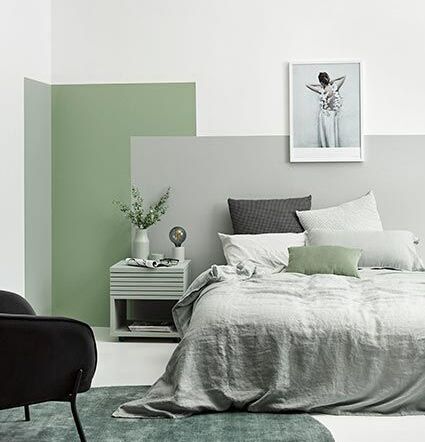
When it comes to choosing colours for your home's interior, there are several factors to consider to create a harmonious and visually pleasing space. Here are some tips to help you select colours that work well together, including paint for interior walls and coordinating accents like drapes, cushions, and other elements:
Understand the Basics of Color
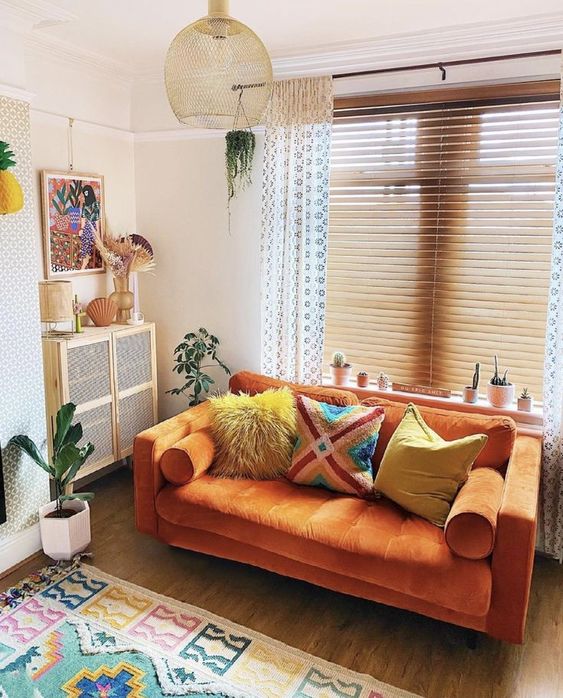
Having a basic understanding of colour theory is crucial when choosing colours for your home. Colours have the power to evoke emotions and set the mood in a room. By knowing the effects different colours have, you can make intentional choices to create the desired atmosphere in each space.
For example, Warm colours like red and orange tend to create a cosy and energetic ambience, while cool colours like blue and green promote a sense of calm and tranquillity.
Establish a Colour Palette
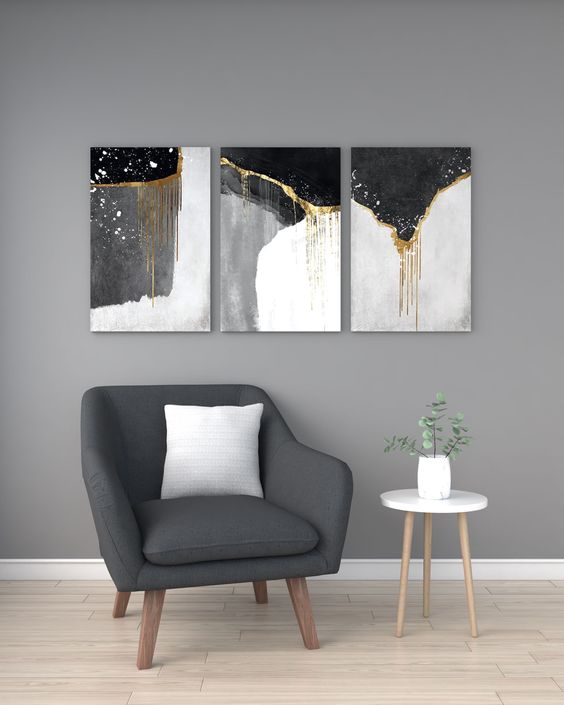
Start by creating a colour palette that will guide your design choices throughout your home. Select a primary colour or a combination of colours that will set the tone for each room. Consider the desired mood, the room's function, and the natural lighting in the space.
For example: Let's say you want to create a modern and sophisticated living room. You decide on a colour palette of grey, and white, and touches of metallic accents. You select a warm grey shade for the walls and choose furniture and decor in shades of white, grey, and silver to create a cohesive and elegant look.
Paint Selection

When choosing paint colours for your interior walls, take into account the colour palette you've established. Select shades that complement each other and create a sense of flow between rooms. Consider the undertones of the colours and how they interact with the lighting in each space. It can be helpful to test paint samples on the walls or use online visualisation tools to get a better sense of how the colours will look in your home.
For example: If you have a small dining area that lacks natural light, you may opt for a lighter shade of paint, such as a pale yellow or creamy beige, to help make the room feel brighter and more spacious.
Accent Colours
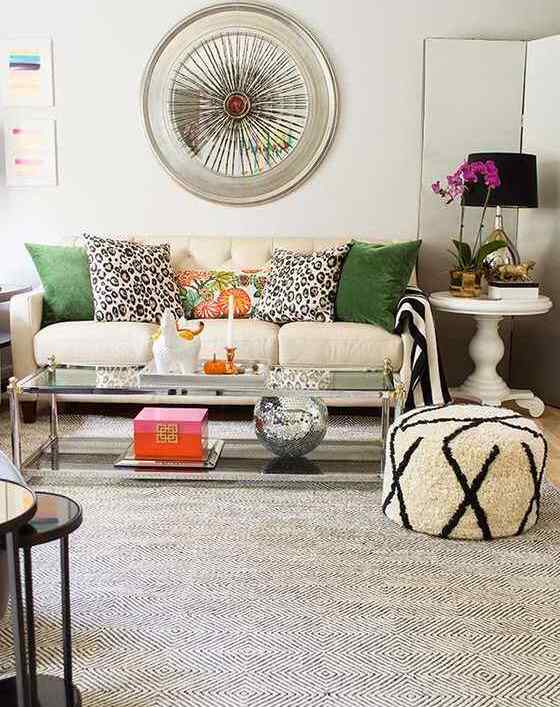
Once you've chosen your paint colours, it's time to select accent colours for elements such as drapes, cushions, rugs, and accessories. Look for colours that either complement or contrast with the wall colour, depending on the desired effect.
For example: Suppose you have chosen a neutral colour, like a soft beige, for your living room walls. To add visual interest and a pop of colour, you decide to incorporate accent colours of teal and coral through throw pillows, drapes, and artwork. These vibrant accents create a lively and inviting atmosphere.
Create a Balance
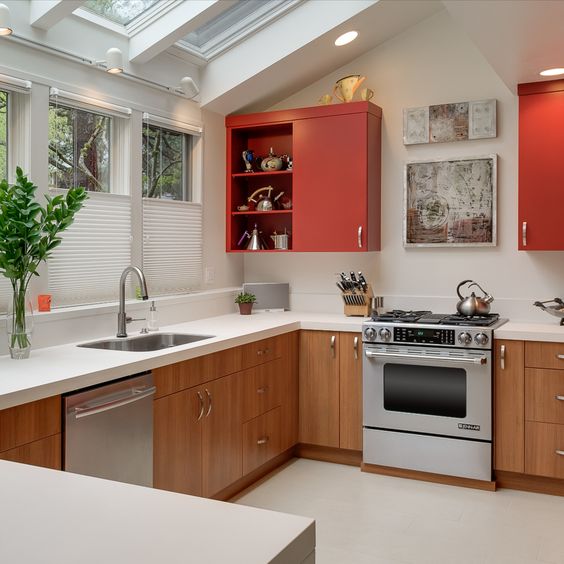
Achieve balance in your colour scheme by considering the proportions and distribution of colours throughout the space. If you have bold or vibrant wall colours, balance them with more subdued or neutral accents. Pay attention to the overall visual weight of the colours in each room to ensure a cohesive and balanced look.
For example: In a kitchen with vibrant red walls, you can balance the intensity by incorporating neutral accents such as white cabinets, stainless steel appliances, and light-coloured countertops.
Recommended Reading
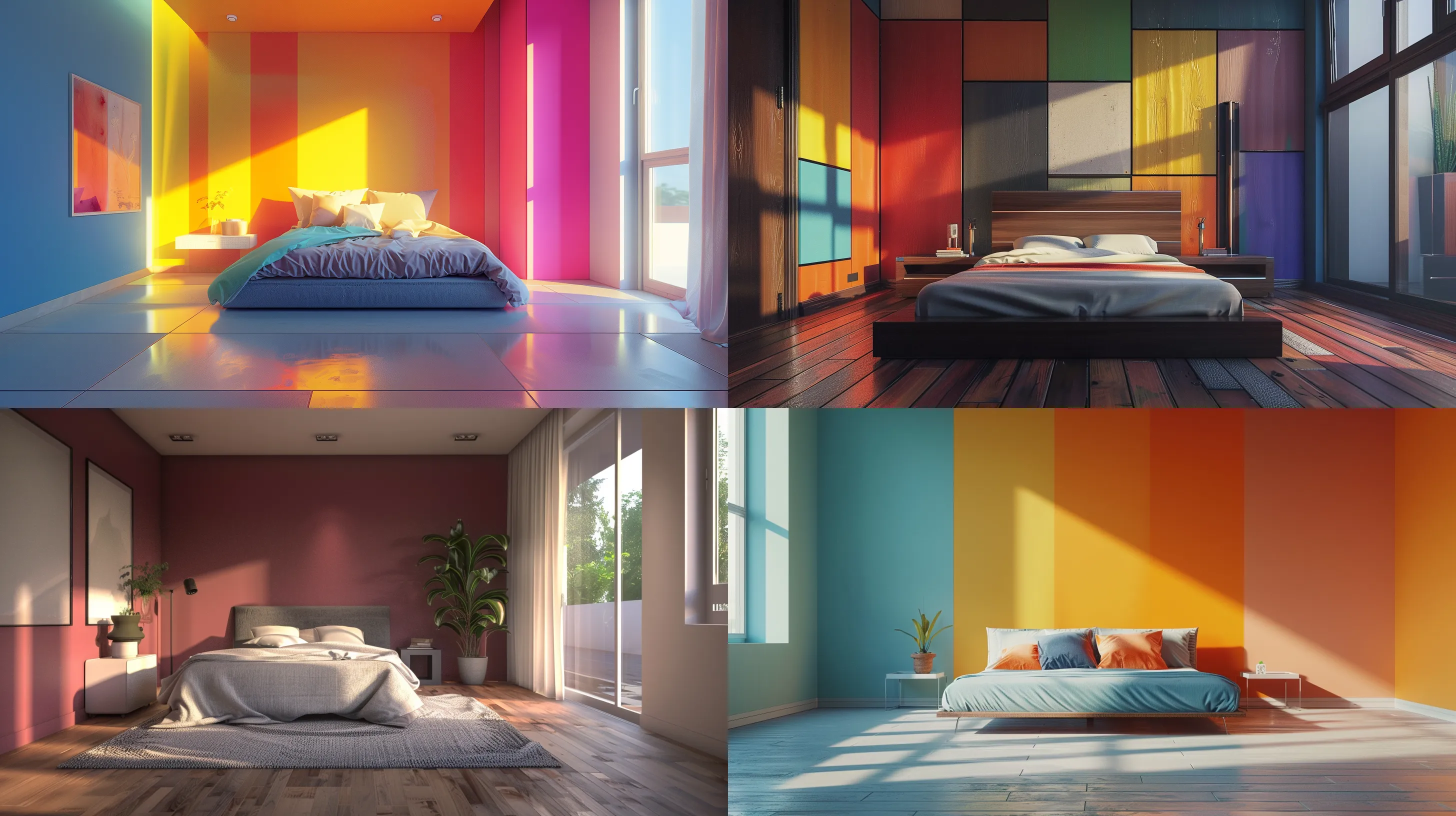
Top 30 Popular Colour for Bedroom Walls to Create a Cozy, Calm, and Beautiful Space in 2025
May 16, 2025
41348+ views

Best 15 Stylish Iron Gate Color Combinations to Transform Your Entrance in 2025
January 31, 2025
17711+ views

23 Best Office Paint Colours for a Productive and Energizing Workspace in 2025
January 31, 2025
15183+ views

Top 31 Wall Paint Designs with Tape for Stylish Interiors in 2025
January 15, 2025
13858+ views
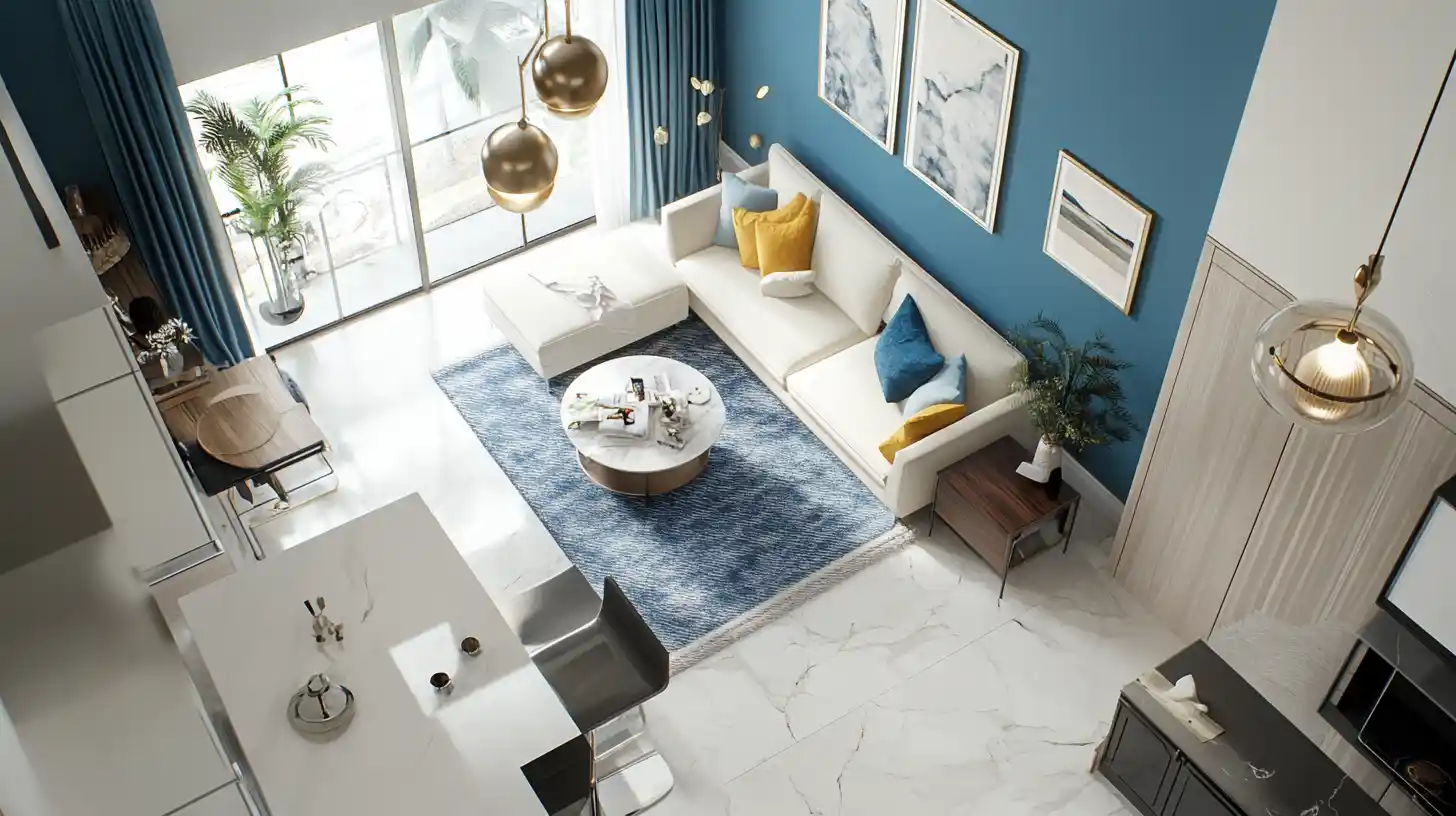
Best 1 BHK Flat Colour Ideas to Light Your Home 2025
January 31, 2025
12145+ views
Exterior Color Choices for Indian Homes: Enhancing Aesthetics

When it comes to choosing colours for the exterior of your home, similar principles apply. Here are some tips to help you select exterior colours that create a cohesive and visually appealing look:
Consider the Surroundings
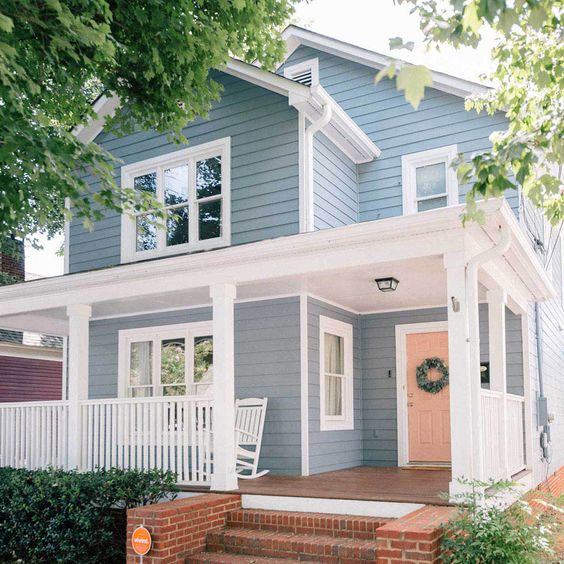
Take into account the natural surroundings of your home, including the landscape, neighbouring houses, and any architectural features. Choose colours that complement the environment rather than clash with it.
For example: If your home is situated in a coastal area with beautiful ocean views, you may opt for a colour palette inspired by the beach. Light blues and soft sandy beiges can complement the natural surroundings and create a serene and coastal vibe.
Architectural Style

Consider the architectural style of your home and select colours that enhance its unique features. Traditional homes often look great with classic colour palettes such as neutral shades, creams, or soft pastels. Contemporary or modern homes may benefit from bold, contrasting colours to highlight architectural lines and create a statement.
For example: For a classic Colonial-style home, you might choose a timeless colour scheme of white or cream for the main exterior walls, paired with black shutters and a dark grey roof. This combination enhances the elegance and traditional charm of the architectural style.
Climate and Lighting

Take into account the climate and lighting conditions in your area. Sun-drenched regions may cause colours to appear more intense, so you might want to opt for lighter shades that reflect heat. In cooler climates, darker or richer colours can add warmth and depth. Also, consider how the colours will look at different times of the day, as natural lighting can significantly affect their appearance.
For example: In a region with intense sunlight and hot temperatures, such as the desert, you may want to choose lighter exterior colours. Light shades of tan, pale yellows, or soft greys can help reflect heat and keep your home cooler while still maintaining an inviting appearance.
Harmonise with Fixed Elements
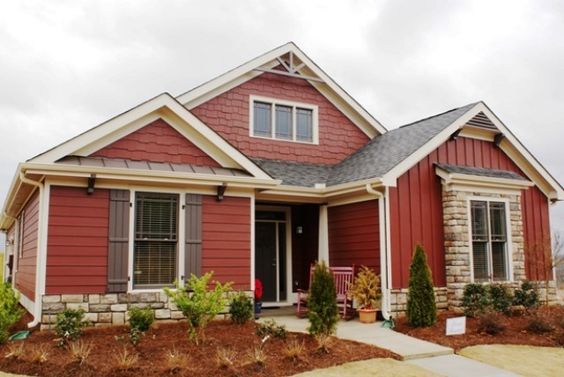
Evaluate the colours of fixed elements such as the roof, stonework, or brickwork, as these are typically more costly to change. Coordinate your exterior colours with these fixed elements to ensure a harmonious overall look.
For example: If your home features local materials such as red sandstone or Jodhpur stone, you can select exterior colours that complement these materials. Warm, earthy tones like rusty reds, creamy yellows, or golden browns can enhance the natural beauty of the stone and create a cohesive look that blends well with regional aesthetics.
How Can NoBroker Help?
Choosing the right colours for your home can be a daunting task, but it's worth taking the time to do right. The colours you select can have a significant impact on the overall look and feel of your home, as well as your mood and well-being.
NoBroker Painting team can assist in choosing colours for your home by providing expert advice based on your preferences and requirements. They can offer professional guidance on colour selection, create colour palettes, suggest coordinating accents, and help create a harmonious and visually appealing colour scheme for your space.
So what are you waiting for? Start experimenting with different colours today and see how they can transform your home!
NoBroker Painting Tips & Color Ideas Testimonials
Nice wark
Good service
I recently took painting services and I am satisfied with services. Professional partners, good team work, good quality of paints. 👍👍
Good quality of work for painting services done for my flat in sarai
Service was provided on time as per they confirmed the slot. And as well as the painter done his job perfectly .
Recently I booked painting services no broker at my house kalkaji and my god the work was done so good that i would really recommend this yo my friends
I have taken the services in Rohini sector 3 Delhi. the services are very good and the team is very responsive and they did very good work I am happy with the services
Got painting service done by Nobroker extremely good service
Professional painting services got done by Nobroker for our DDA flat.
Very good service. My house was painted in chanikaya Puri and the work was completed with in time. Partners were very professional. My 2bhk house costed around 11.5k for basic rental painting
I have a flat in jahangiripuri which i got painted through Nobroker. I was very happy with services and even in my absence work was completed ontime and supervisor shared me the photos post painting. Customer support was responded quickly and helped in getting services done Overall very good experience.
Good painting work, professional painters and happy with the service, as expected by No Broker, thank you for awesome service
Got it recently at my villa Karol bagh, great experience. 👍👍👍👍👍👍
I recently took painting services at Rohini and Mr Kareem and his team were excellent 👌👏
Trust worthy
I hired NoBroker to waterproof my entire house, and it was amazing to see such hard-working professionals at work with the minimal cost. A task that was finished with the utmost expertise. It's worth hiring them! Thanks a lot!
I wanted a one wall painting in my kid’s room and that’s why I approach the NoBroker professionals in Kengeri. With the creative art done on the wall, I am very much satisfied and now my kids enjoy playing in their room. All thanks to the professional team of painting service in Indira Nagar by Nobroker.
Before this festive season
get your house painted
Most Viewed Articles
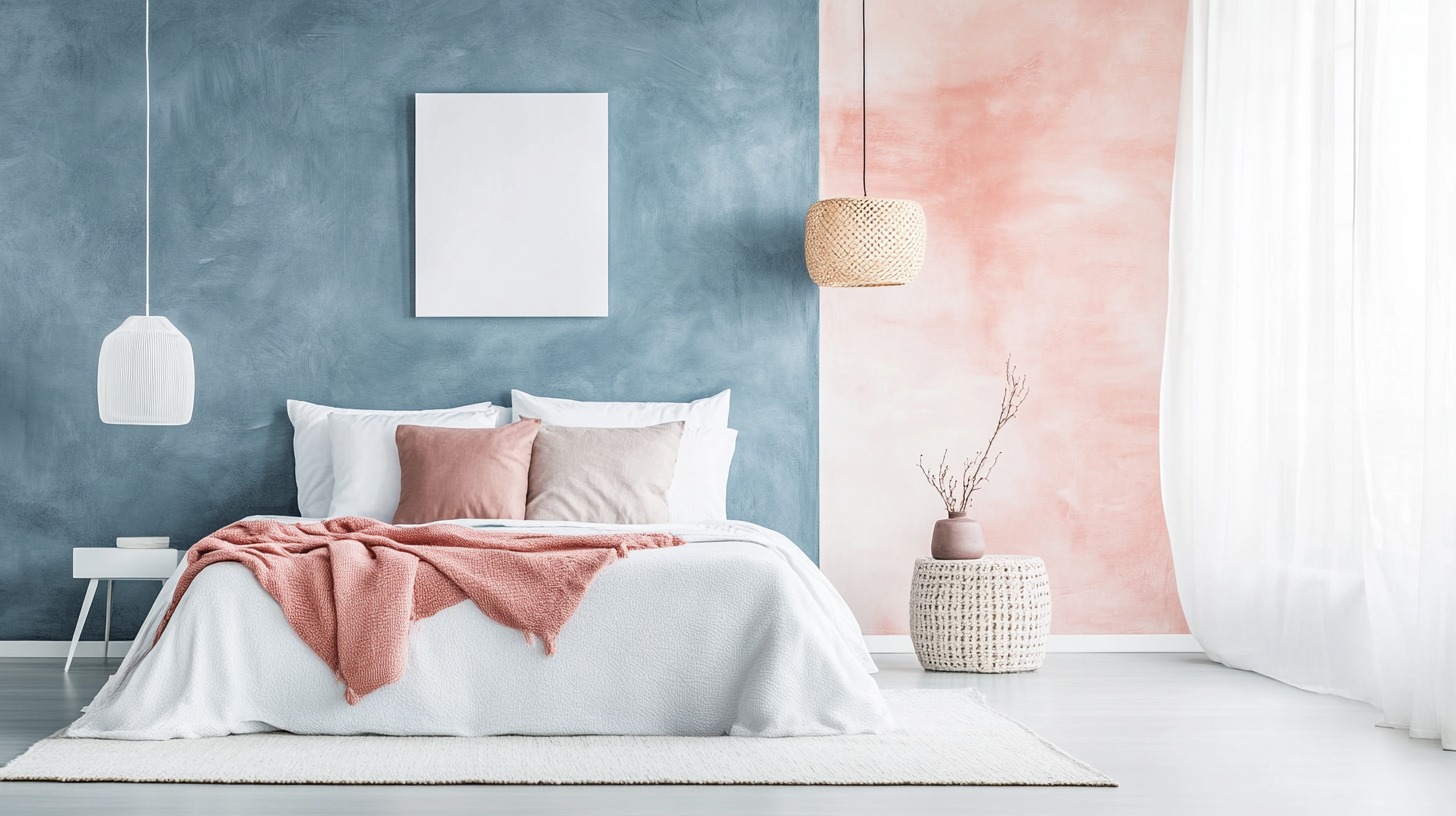
40+ Best Stunning Two Colour Combinations for Bedroom Walls to Elevate Your Space in 2025
January 31, 2025
327981+ views

Top 25 Outside Color Combinations with Colour Codes for a Stylish Home in 2025
May 16, 2025
224285+ views

May 17, 2025
132177+ views
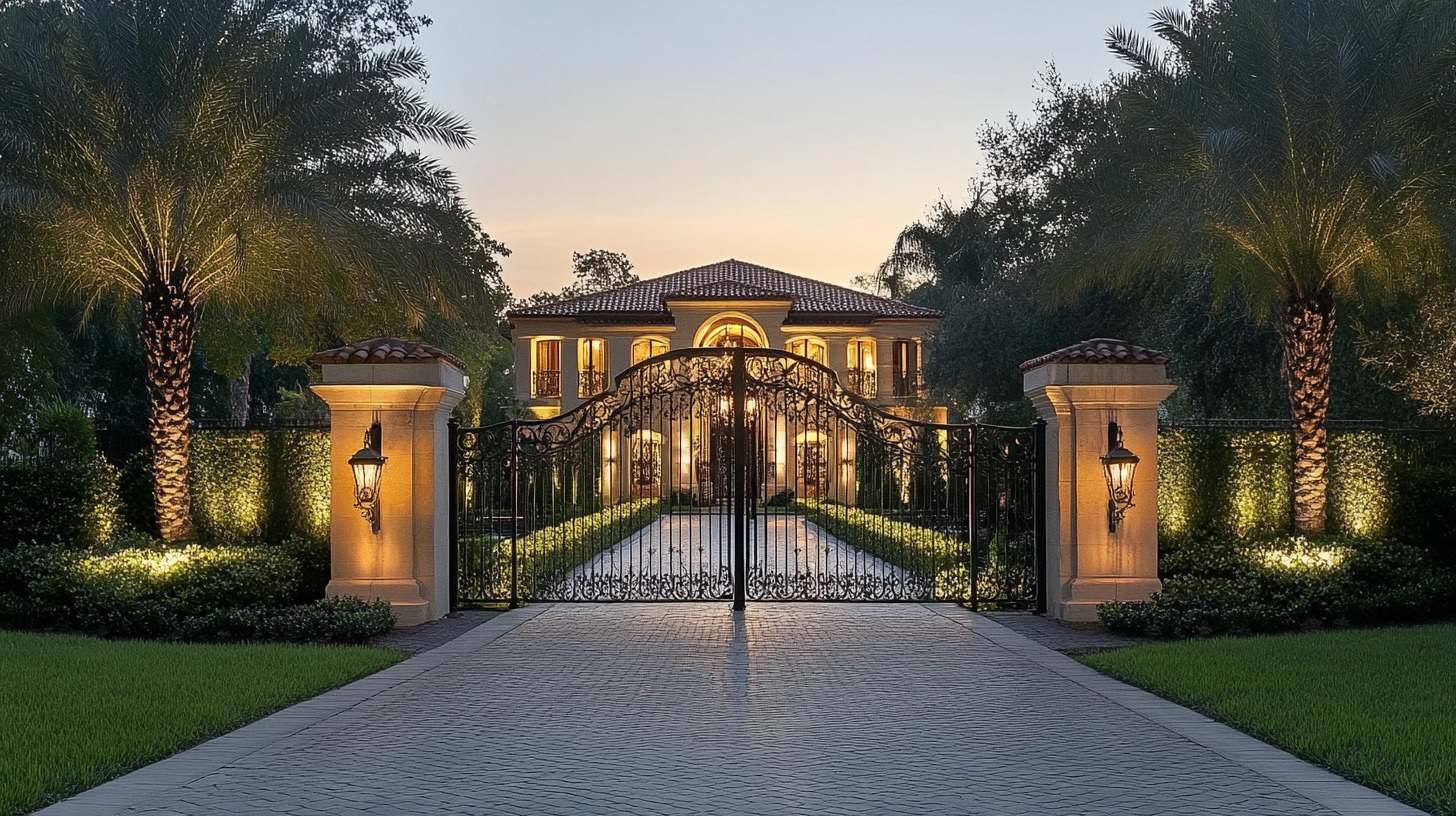
25 Latest Main Gate Colour Combinations: Direction and Placement as Per Vastu in 2025
October 8, 2025
102342+ views
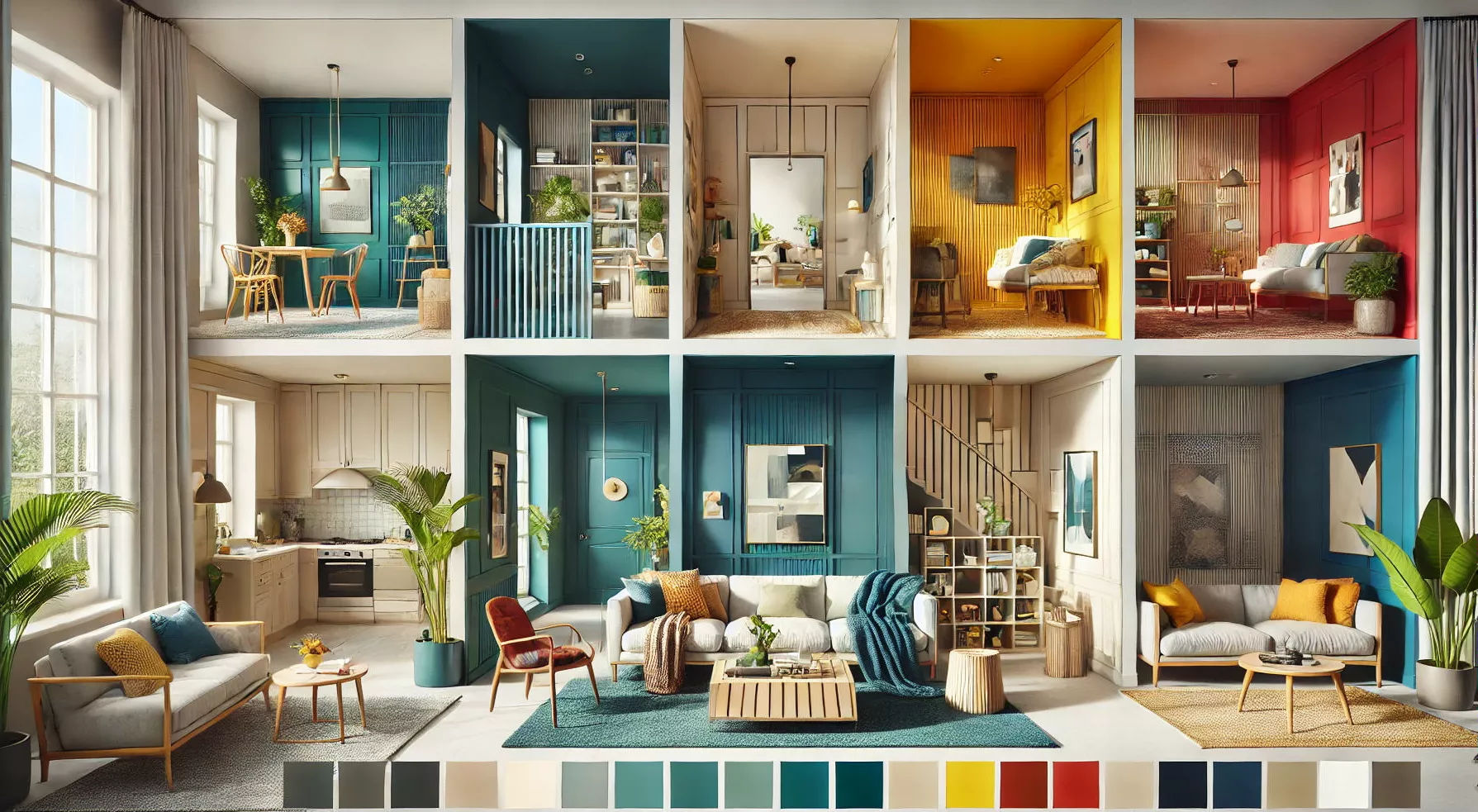
Top 26 Wall Paint Colour Combinations for Every Room: Bedroom, Living Room, and More
February 3, 2025
92530+ views
Painting Service in Top Cities in India
Frequently Asked Questions
Selecting paint colours for your home involves considering factors such as your desired mood, natural lighting, room function, and coordinating with existing elements. Start by understanding colour theory and creating a colour palette that sets the tone for each room. Test paint samples and visualise how they look in your space before making a final decision.
The best colour shades for home interiors depend on personal preference and the desired atmosphere. Neutral shades like whites, beiges, and greys are versatile and timeless. Pastel hues can create a soft and calming ambience, while bold colours can add vibrancy and character. Consider the overall colour scheme and choose shades that complement each other.
When coordinating wall shades with other elements in the room, consider the undertones of the colours. For a cohesive look, choose accents such as drapes, cushions, and accessories that either complement or contrast with the wall colour. Consider using a colour wheel to guide your choices, aiming for a harmonious balance of colours.
Several factors should be considered when choosing paint colours for your home. Take into account the room's purpose, natural lighting, existing furniture and decor, and the desired mood. Consider how the colours will interact with each other and how they will look in different lighting conditions. Test samples and visualise the overall effect before making a final decision.
When selecting wall shades for small rooms, lighter and softer colours tend to create an illusion of more space. Opt for light neutrals or pastel shades to make the room feel larger and brighter. Avoid using dark or intense colours on all walls, as they can make the space feel more confined. Instead, use them as accent colours or for specific focal points.
Loved what you read? Share it with others!
Painting Services in Top Cities of India
Top Paint Brands Price in India
| Asian Paints Price | Nerolac Paints Price |
| Berger Paints Price | Dulux Paints Price |
| Nippon Paints Price | Shalimar Paints Price |
| Indigo Paints Price |
Recent blogs in
25 Latest Main Gate Colour Combinations: Direction and Placement as Per Vastu in 2025
October 8, 2025 by Ananth
20 Stylish Simple Indian Hall Colour Combinations for a Modern Touch in 2025
September 26, 2025 by Jessica Solomon
Birla Opus Plastic Paint 20 Litre Price: Variants, Quality , Coverage and Finish Options 2025
September 24, 2025 by Siri Hegde K
Birla Opus Emulsion Paint 20 Litre Price: Variant, Finish Types and Coverage Area 2025
September 24, 2025 by Kruthi








Join the conversation!